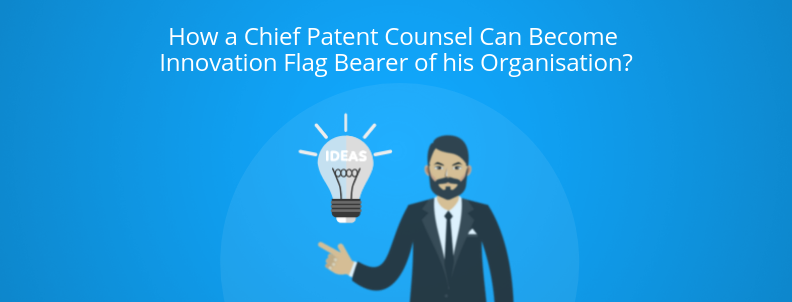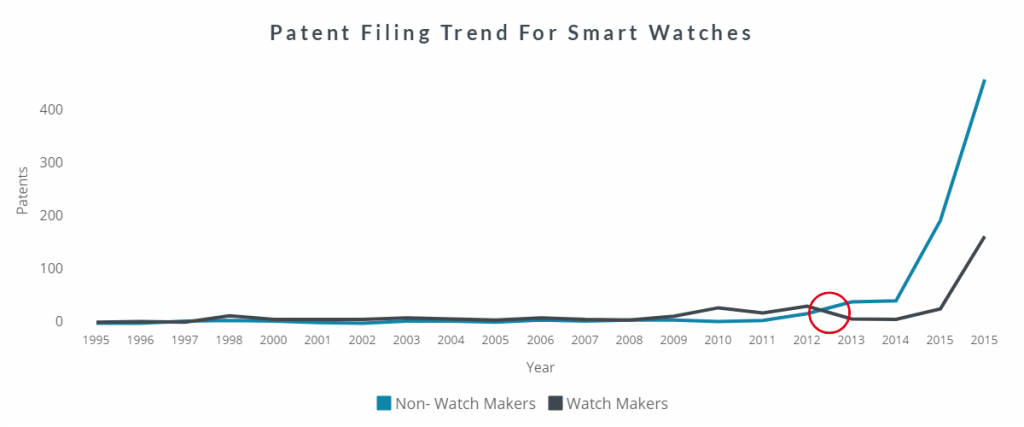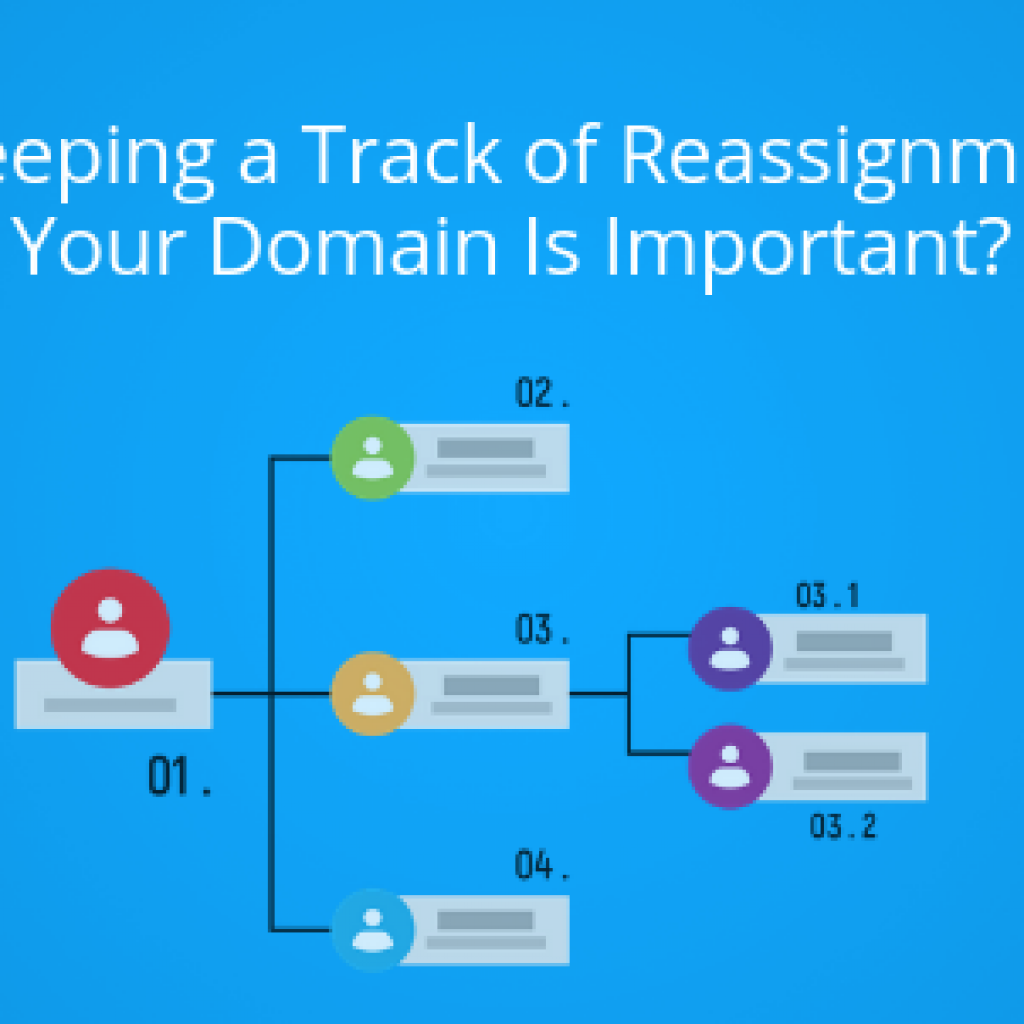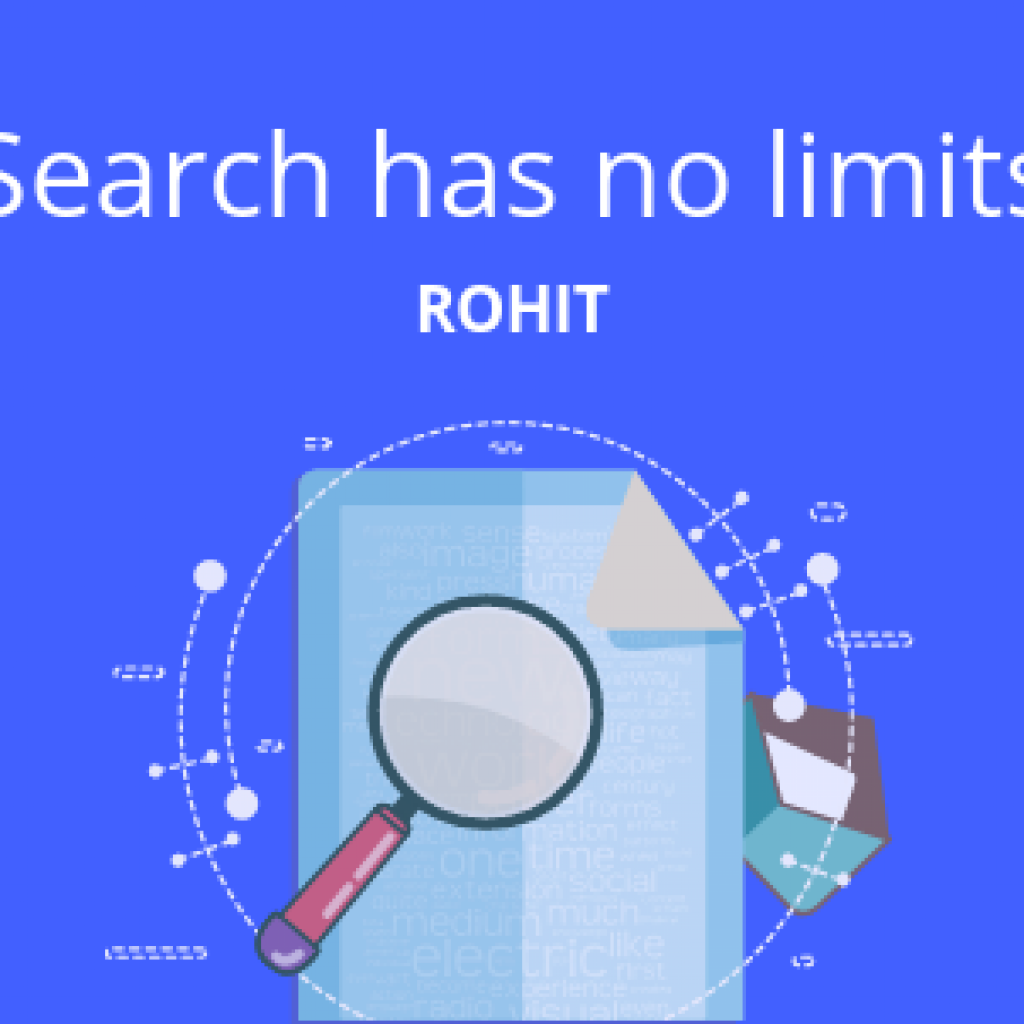While working in the IP industry, I got a chance to work with a lot of corporate patent counsels from SMEs to Fortune 500. I learned that the job and responsibilities of an IP counsel are way more than what meets the eye. Their role is not confined within the triangle of prosecution, maintenance, and monetization of the patent portfolio. They are also involved in the review of agreements and negotiating contracts. However, we are focusing on the triangle here. Working on the IP triangle also involves working with multiple department heads, evaluating the internal and external resources to find what is required to align the IP strategy of a company with its business goals and accordingly pruning the resources/processes that no longer serve the purpose.
Further, I also learned that a patent counsel is a vital link in business machinery that bridges the gap between business and legal strategy. The specialty of a patent counsel is that s/he has sound business knowledge and technical competence to quickly absorb technical details and abstract ideas and combine them with knowledge of laws in a country to come up with an action plan.
“The most effective chief IP counsel sits at the boundary line between ideas and business value.”
— Wayne Sobon, President, AIPLA
Another vital role that a patent counsel in a technology company plays, which is fairly less discussed, is of a link that can help set the direction of the R&D team. It is those latent powers in the hand of an IP counsel which if ignited, could make an R&D team more efficient and can also increase its innovation quotient. Further, s/he can set a new tempo of innovation and can help the R&D team add new technologies into the company and its marketplace.
Simply put, the role of an IP counsel demands you to master multiple roles. S/he has to be a leader, manager, risk taker, deal maker, innovator, entrepreneur, etc. at the same time. In this article, I’ll share my years of learning and experience that I gathered while working with various industry leaders that could help you master the role of an innovation flag bearer in your organization. Let’s get started.
Getting R&D Insights and Counter Measures
Data is the new oil and a patent counsel already owns an oil well of patent data. Patent analytics can reveal a lot of crucial information for an R&D team. It can help forge raw inspiration with information to develop viable R&D strategies. A CIPO can use patent landscapes to help R&D team in followings ways:
1. How can a CIPO Help the R&D Team Set a Clear Research Focus?
In R&D, often you have to take an indispensable decision. While the right decision can help you surpass your competitors, a bad decision can deteriorate your organization’s progress. And deciding your research focus is a similar kind of big decision on which your organization depends.
Research is one complex task involving a great number of thoughts, analysis, techniques, experiments, and results. It is necessary to have knowledge of what exists and from where to start. A strong start with the information, insights, and analysis can help in speeding the research cycle of your organization.
When you have the power of data, using intelligent guesses to make a decision isn’t a good strategy. Rather, the focus should be to harness the power of data in hand to make data-backed informed decisions.
Below are some pointers on how a CIPO can use patent analytics and become instrumental for the R&D team by helping them make data-backed decisions to set the right research focus.
- Finding the common research by major players of an industry
If a majority of players of an industry have started filing patents recently in a particular sub-technological area, it indicates that these problems are worth investing the R&D efforts in. A lot of patents give a vote of confidence to trade the untrodden sea. Investing in such an area could open the doors to new successful products, high licensing potential patents, and can lead to a good market capture.
- Finding the research focus of the top companies and universities
Many a time, a whole industry focuses on common areas while the top players and the top research institutes of domain work on a completely different thing. Patent analytics could help unravel such insights. Such findings and their further analysis can reveal promising areas to channelize your research investments into.
- Spotting continuously researched technological areas with a lot of problems, but less promising solutions
The first two parameters if considered alone can also lead to saturated areas of research as the statistics will be based on the existing level of research. To rule out the false positives, this parameter comes handy.
So, if there is research going on in a particular area where less favorable solutions have been researched, then this also becomes another litmus test to filter out the areas of promising return on research investment.
- Finding the research areas which have gained momentum in the recent time
When research in a particular area has just started, there are possibilities that the above parameters may not help in filtering the promising areas of research. In such cases, judging how fast a particular research area is getting momentum as compared to other areas can be a deciding factor.
While doing such an analysis you may encounter a problem of not finding enough actionable data. If you find yourself in front of such a door, try checking which companies or universities are increasing their R&D efforts in the particular technology area, and what is the research focus of these companies/universities. This can help you make informed decisions.
2. How can a CIPO Help the R&D Team Develop Products that Outsize Profit?
If you want to help your R&D team develop products that become a hit in the market by meeting the unmet demand of your customers, patent whitespace analysis should be your go-to tool. A whitespace analysis can help you find areas with high ROI that are researched sparsely or not at all or maybe where the research has just begun. In the case, you identify an area that hasn’t been researched at all or negligible research has been done, you can help your organization gain the first mover advantage.
Patent analytics can help IP counsels find white spaces in the technology domain. These kinds of insights help a CIPO guide R&D head to channelize R&D resources. For example, in the matrix below, one can easily see which areas in the smart switch industry are crowded in terms of research and which are totally unexplored.
We conducted this analysis sometime back so the data may look a bit old but let’s understand it from a conceptual level. Smart switch domain has a lot of potential and few companies have started exploring the whitespace. In case if you’re interested in knowing what else lies within the whitespace of smart switches, here’s the entire report.
3. How can CIPO help Take a Product From the Conceptualization Stage To the Market Faster and at a lower cost?
Finding the right partner before the development of a new product can decrease the time it takes a product to move from conceptualization stage to hit the market. Further, it helps reduce the cost by: removing traditional silos, bringing together a wider pool of talent, and sharing of equipment and expertise.
It also saves your R&D team from developing already developed solutions by a partner. The European Commission in its report, Why Researchers Should Care About Patents, estimates that most companies waste 30% of their R&D efforts in developing an already developed solution which in the UK alone equates to £4.8bn.
Patent analytics can help a CIPO find and suggest research partners. The universities, startups, and companies identified as actively researching in your domain of interest and targeting the issues that you are trying to resolve could be considered for collaboration purposes. Further, startups that could be acquired to have a competitive edge can also be identified.
To give you an example, FK Biotecnologia, a Brazilian company that manufactures biotech-based products, relies a lot on patent analytics to find partners and acquire leading technologies. The company considers the creative use of R&D and IP as one of the reasons for its success. It has filled a knowledge gap using patent analytics which has given it an edge over its competitors when it comes to bringing new technologies to market.
“I am very surprised with the amount of knowledge I am getting from patent documents. Knowing the legislation and regulations has been a differential for my company. Access to the information has been my biggest problem, but with the Internet things have become easier.”
Fernando Kreutz, CEO, FK Biotecnologia
4. How can a CIPO derive Competitive Insights and create a Risk Mitigation strategy?
A CIPO can use patent analytics to get a lot of competitive insights. Not only s/he could tell where all the established players are channelizing their R&D resources but s/he can also let different stakeholders know which new players – startups as well as established corporations – have entered recently into your domain.
For example, if in 2010, watchmakers like Seiko, Casio, etc. had detected earlier that Apple is filing patents in the smartwatch domain; they would have come up with a smartwatch way earlier than Google, Apple or Pebble that pioneered the domain.
Thus, not only a CIPO could keep the stakeholders up to date with what all the major players of their domain are working on, s/he could also provide them insights on how non-players are trying to break into their core domain. This can help an organization detect threats way earlier, which can help create a mitigation strategy.
5. How can a CIPO identify Cross Industry Innovation to aid the R&D Team?
Any organization needs to gather intelligence to keep tabs on technological development activities both inside and outside their domain. A great technological reconnaissance goes beyond the traditional means and formal efforts. An organization needs to have a strong intelligence-gathering network to maintain a competitive edge while increasing R&D productivity.
In general, most of the technology-intensive companies follow two R&D approaches – the breakthrough or closed wall and the technology fusion or cross-industry innovation approach. Under the breakthrough approach, a company follows a linear and non-collaborative approach where a new technology replaces the older one; for example, the ICs replaced the vacuum tubes. Most or all of the research happens inside the walls of the R&D facilities of a company.
In the technology fusion or cross-industry approach, a company leaves its R&D facilities to find solutions in other industries to solve their industry issues. This approach is non-linear and collaborative in nature. To give you an example, 3M used the cross-industry approach to find a solution developed by military surveillance experts to solve their medical imaging problem. The team at 3M was developing a product that takes high-res images to detect an early-stage tumor. Isn’t it amazing?
From aerospace to chemical, pharma to software, technological development is happening at a breakneck speed. Moore’s Law seems like running amok for every sector. Companies are crossing the technological boundaries of their domain to find solutions to their R&D issues in others. At such a time, following the old closed wall approach to R&D won’t work. An R&D intensive company, to stay competitive, has to create a blend of both Fusion and Breakthrough innovation approach.
How can a CIPO help here?
A CIPO can use the power of patent analytics to help his R&D team spot solutions devised by other industries to solve their industry problems. Let’s take an example of the e-cigarette industry that has spent a good amount of R&D resources in solving the power management issues. The image below highlights the number of patents filed by some of the major players – the actual company names are hidden to maintain anonymity.
More than a thousand patents have been filed by the top players to increase the battery life in their e-cigarettes to save their consumers from the hassle of frequent charging. This high patent filing represents that these companies might not have tried looking beyond their industry to find the solution. The smartphone manufacturers have faced similar issues.
An obvious and relevant domain to explore for finding a solution for this problem is of battery. A CIPO can instruct his in-house team or external vendor to get him relevant patent data and solutions implemented by companies in these industries to solve the issue which can then be tweaked as per his organization requirement to come up with a solution.
6. How can a CIPO use patent analytics to Decrease the time spent on primary research?
Do you agree that finding the right information at the right time is the key to improved decision making? A survey by International Data Corporation (IDC) found that 76% of executives consider information to be their most critical asset. Yet, 60% felt that a lack of understanding of how to find the right information is keeping their team from finding the mission-critical information.
Studies by AIIM and Ford Motor Company estimate that knowledge workers spend 15–25% of the time on information that is of no use to the task at hand. Information that couldn’t be found on time is basically equivalent to no information at all. It leads to double work, faulty decision making, lost sales, and further creates a hole in the R&D budget of your company.
To understand how big of a hole it creates, let’s assume a scenario. Before we go ahead with the understanding, let me share stats of another study conducted in 2007 by Outsell Inc. Outsell surveyed 6300 scientists and engineers working in corporate R&D, and found that on average a professional spends 5.5 hours gathering and 4.5 hours in analyzing and applying the collected information.
In the era we are living in, the availability of information isn’t an issue. We, in fact, are drowning in the sea of information. The issue is to quickly uncover important information. However, this hardly happens. What happens instead is – hours of dead-end research.
Let’s now circle back to the estimation of the impact of not finding the right information at right time within R&D budget. Let’s assume out of the 10 hours per week, 3 hours get wasted in sifting through and analyzing irrelevant information. Thus, in a year, approximately, a single R&D professional spends 156 hours on irrelevant information.
Let’s infuse life into these stats. Let’s consider a Fortune 1000 company with 500 R&D Engineers with an annual salary of $100k. As per my calculations, such a company will lose $3744000 to the wasted hours. Here is the breakdown of my calculation:
| Total R&D Engineers | 500 |
| Total Working hours in a year | 40 hours per week X 52=2080 |
| Cost per hour | 100k/2080 = 48 |
| Cost to company of wasted hours | 500 x $48 x 156 = $3744000 |
This was a calculation on wasted hours and the problem doesn’t end here. There are probabilities that the inability to find the right information on time would lead to a substandard outcome and finally an intellectual rework would be needed.
Professor Kit Sims Taylor in his study, which he presented at the International Conference on the Social Impact of Information Technologies in Oct 1998, found that an R&D professional spends nearly 33% of the productive time in intellectual rework. 2/3 of the time is spent in actual knowledge finding and only 10% in the creation of new knowledge.
Let’s consider the same Fortune 1000 company and let’s assume that per year $5000 per employee comes as intellectual rework cost. Thus, for 500 employees, it would come out to be $2,500,000 per year.
These two scenarios were based on quantifiable issues of not finding the right information and a direct result of the same. There is one more issue of opportunity costs of not finding the right information which rather goes unnoticed.
To calculate the opportunity cost, let’s assume the same Fortune 1000 company is having revenue of $600,000 per employee. The calculation of opportunity costs will be 500 employees*10 hours of search* 33% time spent in finding non-existent information*revenue per hour which is roughly equal to $475961.5
Thus, in total, a company for which 500 R&D engineers work, when they don’t find the right information, the company in a year suffers a loss of $ 2,500,000 + $3,744,000 + $475,961.50 = $ 6.7 million. This is among the least discussed topics and it has a big impact on the budget and productivity of an R&D team.
The good news is that a CIPO can save his/her R&D team from investing resources in finding non-existent information and conducting dead-end research that leads to $3,744,000 in wasted hours and $475,961.50 in opportunity costs. S/he can use patent analytics to provide their R&D team curated information they are looking for.
Let’s assume your organization is one of the leading smartphone manufacturing companies. Your R&D team faces the challenge to reduce the size of a wireless charger while increasing its range without affecting living beings with radiation. You can help the team by getting all the patents filed to solve similar problems during a particular time period — in last one year or last 18 months.
You can instruct your in-house patent analytics team or outsourcing partner to tweak the report in a manner that it contains the problem solved and the solution discussed in each patent. This will further save the time of your team as team members won’t be reading each patent completely. They will be sifting through the problem-solution approach and will only be reading a patent completely when they find technical knowledge to be highly relevant.
Another benefit of this type of report is that it will save your R&D team from inventing something that has already been invented by someone else. Thus, the issue of reinventing would be taken care of automatically.
Further, this will give your R&D team an intel on how researchers at other companies are approaching a problem. There are fair chances of your team finding inspiration to work on new ideas by getting exposed to different type of solutions being invented across the industry.
“Innovation is taking two things that already exist and putting them together in a new way.”
–Tom Freston
Action Plan
In order to become the innovation flag bearer of your organization, a corporate IP chief could use patent analytics to help the R&D team in the following ways:
Helping Set a Clear R&D Focus: A CIPO can use different criteria to filter out information that can help him/her find areas ripe for innovation for the R&D team. S/he can also use strategies like whitespace analysis to find technological areas where the organization has a chance to get a first mover advantage and file more patents.
Helping Reduce the Product Development Cycle by External Collaboration: Right collaboration has a positive impact on R&D productivity. A CIPO can use patent analytics to figure out partners that could be considered for collaboration.
Competitive Insights to Make Strategic Move: A CIPO can provide crucial insights after analyzing the research landscape. S/he can predict technological shifts and can update the R&D team regarding the upcoming new waves.
Cross-Industry Innovation: A CIPO can use the power of patent analytics to help his/her R&D team spot solutions devised by other industries to solve their industry problems.
Helping R&D People Find the Right Information at the Right Time: One of the biggest hurdles knowledge workers face is of not finding the right information at the right time. This increases the burden on the R&D budget and also increases the product development cycle. A CIPO can use patent analytics in a strategically new way to eliminate this problem.
Conclusion
A CIPO has various roles and responsibilities s/he has to handle for effective implementation of R&D and patent strategy. However, making informed decisions requires access to insights that are deeper than mere industry experience, something which CIPOs of many innovative companies that we work with, often praise us for. Interested in knowing how we can help you achieve the bigger goals of your organization’s IP and R&D teams?

Authored By: Shikhar Sahni, AVP, Operations, and Nitin Balodi, Team Lead, Market Research













